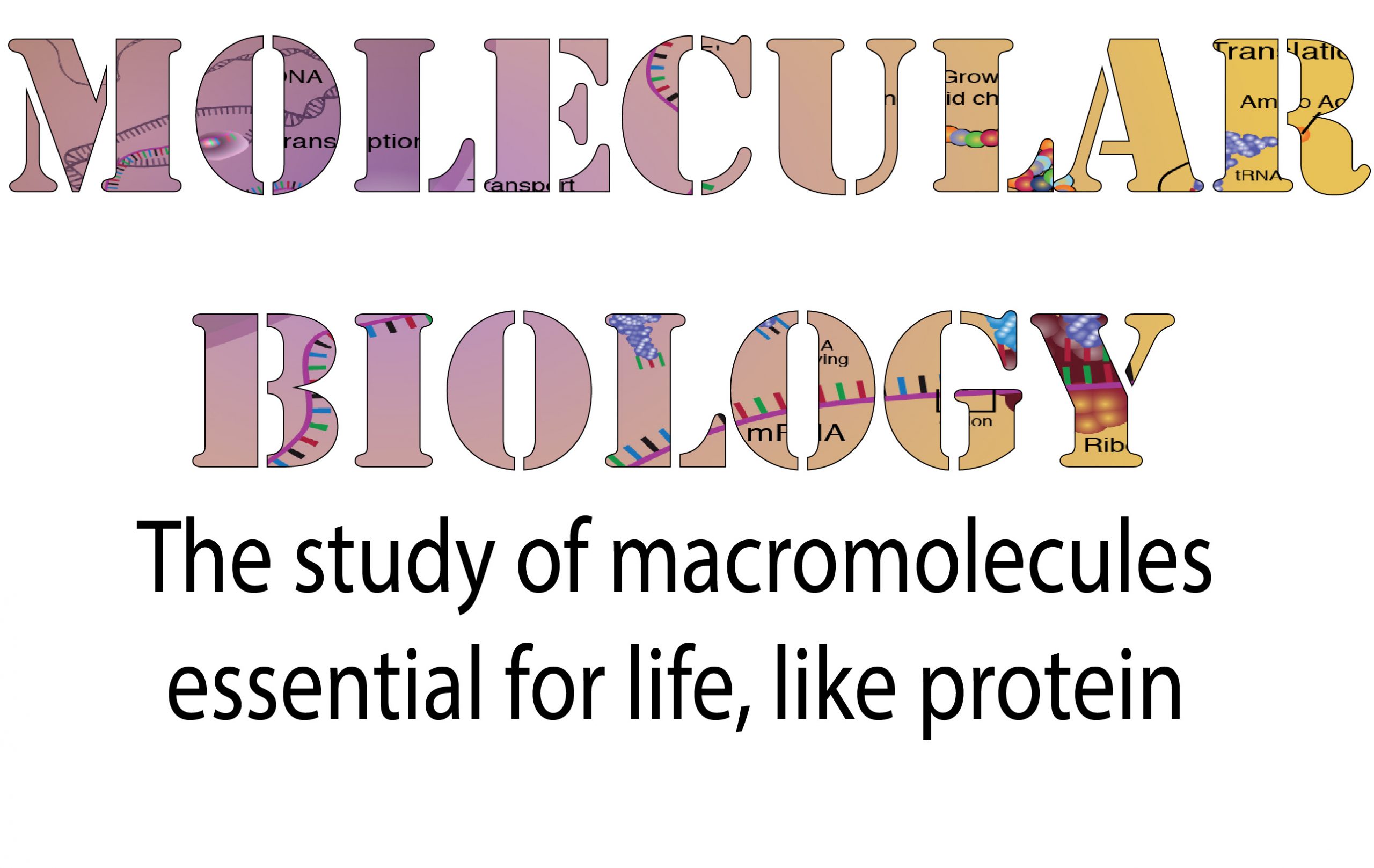15 Introduction to Molecular Biology
Andrea Bierema

This unit addresses how DNA is read to create protein and that proteins determine an organism’s characteristics. The first chapter introduces proteins. Then the next several chapters describe in detail how proteins are synthesized. They are followed by a chapter that illustrates an example in which proteins are used: cell signaling. The unit ends with a discussion on how we as humans can sequence, modify and edit DNA—which then affects protein synthesis—via genetic engineering.
The Cell
Review the main structures of a cell before continuing on to the next chapters. The following video gives a tour of the cell:
Additional Information
To take a closer look into the organelles of a cell, check out Genome Unlocking Life’s Code animations!
Molecular Biology
We cover a span of topics in this unit. To find out some of the basics of molecular biology and how they relate to one’s life, watch the following video (the transcript is located below the video). It’s an excellent animation!
Video transcript
- Inside each cell is a code of instructions for life… this is your genome. Unfolded, it is 6 feet long yet… 30,000 times thinner than a strand of hair… trimming it is not a good idea. All your cells have the same genome but different parts are active in different cells.
- Your genome is made of deoxyribonucleic acid (DNA). It is the parts list and instruction manual for life and can make a complete you from scratch. English uses 26 letters. Morse code uses 2. Computers use 2. Your genome uses 4 chemicals (Adenine, Thymine, Guanine, and Cytosine) and forms words that are 3 letters long. Each word codes for a building block of a protein. The word TGA means stop and finishes a sentence. Each sentence in your genome is called a gene and codes for a protein.
- Genome codes for proteins. Proteins make us alive so that you can watch this film. You breathe, you move, you think because many proteins are working very hard. Your genome has billions of letters with 20,000 sentences coding for 20,000+ proteins. 2% of the genome codes for building proteins. 30% regulates when to build these proteins. A great part is unknown.
- Genome is a fancy word for all your DNA. Your genome makes you who you are. For example, the normal hemoglobin gene contains the word GAG. With a single letter, error hemoglobin folds differently causing sickle cell anemia.
- The way you live can influence how the genome works. Some genes increase the risk of adult diabetes. However, with diet and exercise, you can overcome the genome and prevent diabetes. Being a couch potato does not help your genome.
- DNA has two complementary strands: A always matches T and G always matches C. It’s like an object and its mold pressed together… you can create one from the other. When the cell divides the strands replicate creating two double strands.
- If there is a matching error, a protein repairs it keeping the genome intact. With a faulty repair protein, errors accumulate… this is the cause of many cancers. It’s like having a horrible repairman wreck your home.
- During cell division, the genome gets condense into groupings called chromosomes. You get 23 from your father and 23 from your mother to make 23 pairs. If you get a faulty gene from one the good copy compensates… this is why you don’t marry your sister. Many errors in DNA are harmless… they don’t lead to disease and are passed on. Analyzing these errors you can trace a piece of DNA back to an individual. Useful to get suspects in and out of jail and also to trace ancestors.
- Your DNA is pretty durable… can last for 100,000 years if you don’t get cremated.
- 99.9% of your genome is identical to the genome of the person next to you. Every living thing on Earth has DNA. Humans and mice are 85% similar. Humans and flies are 49% similar. Humans and bananas are 41% similar.
- You have a genome; therefore, you are alive.
- TGA = the end.
- Genome: unlocking life’s code.

